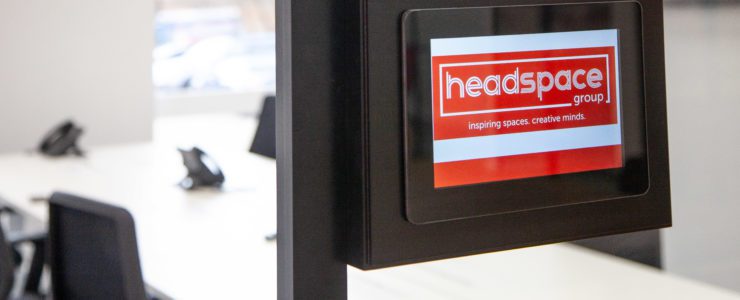To Zoom or not to Zoom
To Zoom or not to Zoom? That is the question. At least, it is if you have a job where you need to keep in regular contact with colleagues at various sites.
The question is being asked after millions of us spent hours in video conferences during the Covid-19 lockdown and wonder if there is an end in sight to the endless rounds of Zoom calls.
Research has shown in the 12 months between October 2019 and October 2020, we spent a staggering 3.3 trillion minutes on video calls all over the world. This equates to an unbelievable 6.3 million YEARS spent talking to tiny faces on our laptop screen!
The pandemic caused the number of minutes to rise significantly from 97 billion in the same period one year earlier. We increasingly turned to Zoom, Google Hangouts and Microsoft Teams to keep in touch with workmates in remote locations.
While this technology has been vital to keep teams in touch with people on lockdown and working from home, it begs the question of whether we are using tools like Zoom too much?
What are the benefits of a Zoom call?
There are many obvious benefits to a Zoom call. Seeing the person you are talking to, without having to be in the same room, helps you to keep in touch with colleagues at other sites on a more personal level. It is sometimes preferable to just hearing a voice over the phone, or sending an email.
The fact that you can meet all your team virtually at the same time is also a bonus. If you’re working from home, at a remote office, or in different coworking spaces, it can be easy to lose touch with what’s happening with projects. Meeting up via Zoom at least once a week is invaluable to keep everyone on the same page.
Of course, video conferences are completely Covid-safe. Even when the pandemic was at its peak, people could still keep in regular touch with workmates to keep their business afloat, despite the adversity.
The release of data showing just how much time is being spent on video conferences has led business leaders to question whether we’re making the most of work time by spending so much of it in this way. It has been suggested we should decide whether the individual situation actually requires a zoom call before plunging straight in.
Have some Zoom calls become inefficient?
Zoom has been our saviour when it’s working well, but calls can quickly become inefficient if they waste time unnecessarily through technical errors.
Similarly, if they are organised poorly, or if employees are suffering a lack of concentration due to the sheer volume of video conferences they have attended, this can also make them a waste of time.
Research from Wundamail reveals 42% of remote workers feel they work more productively when they can carry on uninterrupted for a long period of time. The report also claims the amount of time we’re spending on video calls has become “excessive”.
The research was carried out in 2020, during the lockdown, when 20,000 employees in the UK and United States were surveyed. Respondents worked in teams of three or more people in a range of different companies. Some employees felt they were “overindulging in pointless chit-chat” when they joined too many Zoom calls.
In technical terms, Zoom meetings can take up a relatively large amount of available bandwidth, slowing down your internet connection. Dealing with a pixelated screen, buffering and audio that’s breaking up can cause more frustration than productivity.
When it comes to employee fatigue, it can lead to participants on the Zoom call forgetting key information afterwards because it isn’t written down. Some 30% of those present don’t complete actions they have agreed over video calls.
How should you make the most of business time?
Instead of having Zoom calls every day, evaluate whether the situation actually requires a video call. The report from Wundamail further revealed that teams worked better with limited virtual meetings, giving them some time away from their colleagues, in a remote setup
While 45% of remote workers surveyed said they used video-conferencing more than any other method of communication, this didn’t mean they wished to use it excessively.
A body of academic research suggests we’re feeling tired when it comes to video calls because of the unnaturally large amount of eye contact we need to make. This can be exhausting, as can being confronted with our own face on the computer screen for hours on end.
According to Stanford University professor Jeremy Bailenson, founder and director of the Stanford Virtual Human Interaction Lab, it’s like looking into a mirror all day. Video call participants need to appear focused in the frame 100% of the time.
We’re not moving around and we’re trying hard not to do any normal things, like the odd yawn, or shifting in our seat. As we’re acutely aware of the other participants seeing our faces on the screen, we’re tired of trying to appear interested and alert at all times. It can become stressful – and when we feel stressed, we’re less productive.
What other methods of communication are used?
Many employees use the traditional methods of communication such as meetings in person, telephone calls and emails. When asked which methods they used, 32% of respondents said they found written updates via email more helpful.
Checking in each day and receiving structured team briefs helped remote teams to communicate. They also had something in writing to check back on if necessary. A further 13% of respondents used instant messaging or texts, while 9% preferred phone calls.
Some businesses say they have significantly reduced their use of video calls in recent months, after using them continually during the lockdowns. The telephone has become a viable alternative again for projects that need collaboration.
However, nothing can replace face-to-face meetings, which are far more personal. While the business world has been disrupted significantly by the pandemic, relying on digital technology, 84% of respondents say they still prefer meeting in person, according to research by the Great Business Schools.
When you use co-working space from Headspace Group, their workspaces are Covid-secure, while there are meeting rooms available for those important in-person gatherings.
As life starts getting back to normal with the rollout of the Covid vaccine, Zoom will always have its place, but nothing will ever replace the value of meeting in person.
© Rawpixel.com / Shutterstock.com


